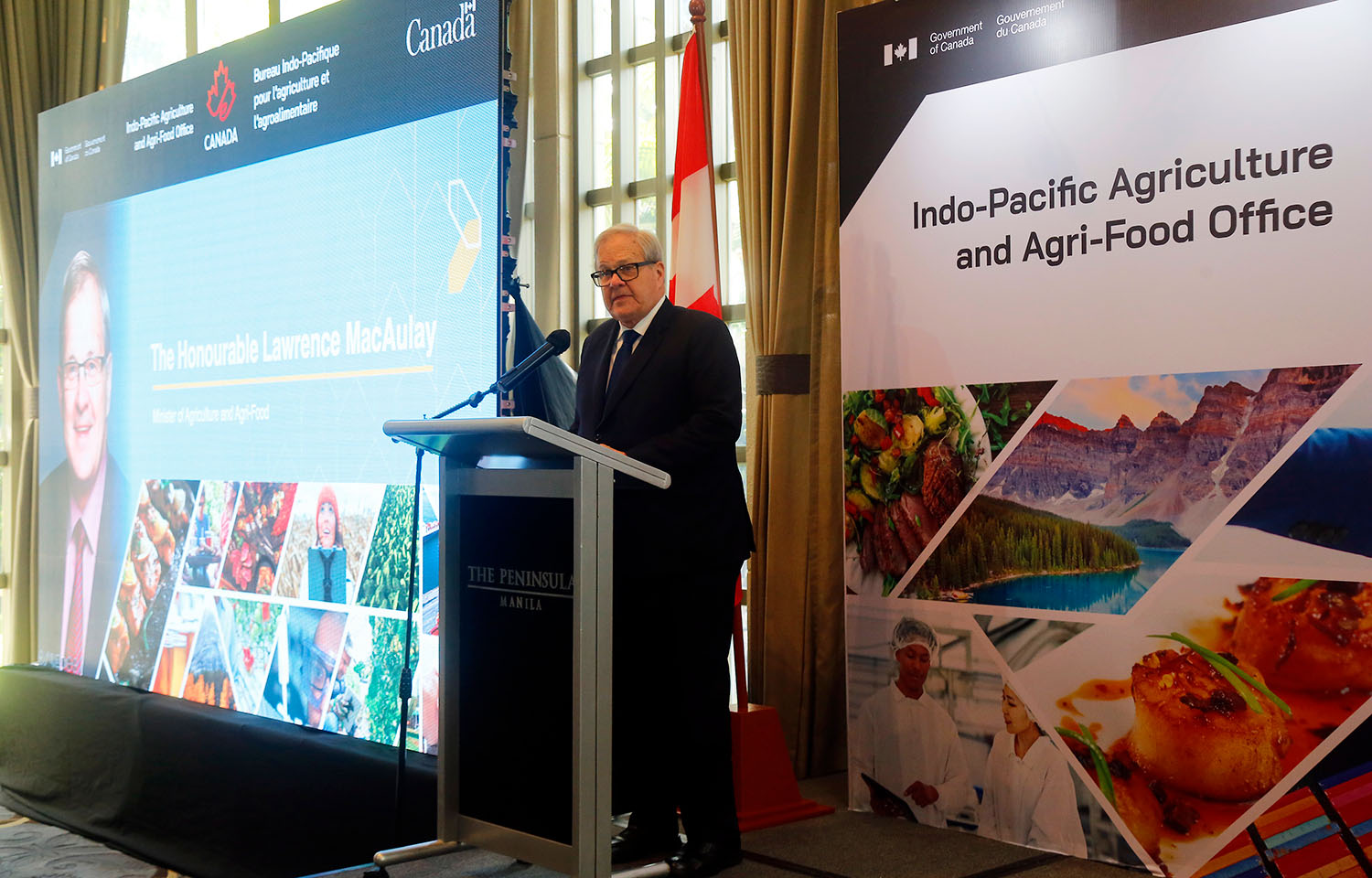Canada is targeting the Indo-Pacific region as a key area for expanding its international trade, including seafood exports.
On 21 February, Canada Minister of Agriculture and Agri-Food Lawrence MacAulay officially opened Canada's Indo-Pacific Agriculture and Agri-Food Office (IPAAO) in Manila, the Philippines, calling the move “a new chapter for Canada's engagement in the region.”
“We export nearly half of what we produce in Canada, and the global demand continues to grow. I have no doubt this office will play a central role in growing export markets for our world-class Canadian farmers and increasing collaboration and cooperation in this important region,” MacAulay said at the ceremony.
MacAulay is in the middle of a two-week trip to Malaysia and the Philippines, following previous visits to Japan, Vietnam, and South Korea. In December 2023, he announced the appointment of Diedrah Kelly as the IPAAO’s inaugural executive director, along with the dedication of CAD 31.8 million (USD 23.4 billion, EUR 21.7 billion) in funding for the office to help it engage with stakeholders, regulatory counterparts, and policy decision-makers in the region.
“We launched the Indo-Pacific Strategy to position Canada for long-term growth and prosperity that benefits everyone,” Canada Minister of International Trade, Export Promotion, and Economic Development Mary Ng said. “The appointment of Ms. Kelly as the executive director of the new Indo-Pacific Agriculture and Agri-Food Office demonstrates Canada’s continued commitment to enhancing and diversifying our trade and economic partnerships with Indo-Pacific economies and growing opportunities for our world-class businesses.”
The IPAAO is a joint initiative by Agriculture and Agri-Food Canada and the Canadian Food Inspection Agency, with the backing of the Canadian Agri-Food Trade Alliance (CAFTA) – a coalition of national organizations with the mission of supporting a more open and fair international trading environment for agriculture and agri-food.
The Fisheries Council of Canada (FCC) is also a backer of the initiative.
"The Indo-Pacific region is populated by strong seafood cultures. The Canadian seafood sector sees tremendous opportunity to expand our exports of delicious, high-quality Canadian fish and seafood. Our members look forward to working with the IPAAO to realize those opportunities,” FCC President Paul Lansbergen said in a press release.
In 2023, Canadian fish and seafood exports to the Indo-Pacific reached CAD 2 billion (USD 1.5 billion, EUR 1.4 billion) in value. At an Atlantic Canada Seafood reception in Manila, co-hosted by the Lobster Council of Canada and the Atlantic provinces on 23 February, MacAulay outlined the opportunities that exist for Canadian seafood in the region.
“By keeping our presence in the region strong, including through our new Indo-Pacific Agriculture and Agri-Food Office, we're sending a clear message that Canada is here to stay while opening new doors for our hardworking fishers, farmers, and ranchers,” he said.
MacAulay also said the IPAAO's unique model “will bring a regional lens to the Indo-Pacific,” with a mobile team working to build strategic partnerships “that will grow our export opportunities and increase the demand for Canadian products.”
“The IPAAO will leverage Canada's expertise as a world leader in food safety and sustainability with that of our Indo-Pacific partners to tackle common challenges,” he said.
The Indo-Pacific region currently accounts for around 33 percent of the world's economic activity, and in 2023, Canada's agri-food exports to the region surpassed CAD 22.8 billion (USD 16.8 billion, EUR 15.5 billion). The Indo-Pacific is likely to make up two-thirds of the middle class by 2030 and over half of global GDP by 2040, and global agri-food and seafood imports into the Association of Southeast Asian Nation (ASEAN) markets have increased by 177 percent from 2012 to 2022 – from CAD 72 billion to CAD 200 billion (USD 53 billion to USD 147 billion, EUR 49 billion to EUR 136 billion), according to the ministry.
Canada has a trade advantage in the region through pre-established agreements, including the Canada-Korea Free Trade Agreement (CKFTA) and with Australia, Japan, Malaysia, New Zealand, Singapore, and Vietnam through the Comprehensive and Progressive Agreement for Trans-Pacific Partnership (CPTPP).








